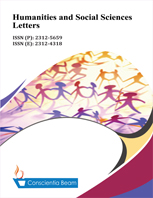Trade Balance and the COVID-19 Pandemic: The Case of Jordan
DOI:
https://doi.org/10.18488/73.v10i4.3211Abstract
This research aimed to study the main determinants of trade deficit in the Jordanian economy for the quarterly periods from 2009 to 2021. Specifically, the study examined the effects of the COVID-19 pandemic on trade balance, in addition to other variables. The methodology for this study used Ordinary Least Square (OLS) method which, after applying the necessary diagnostic tests, was verified as the appropriate method. The main result of this paper shows that the COVID-19 pandemic reduced the trade balance, as expected. However, this result is statistically insignificant since the pandemic would improve the growth of the trade balance (TD) from the imports side but would worsen it from the exports side. The results also found that foreign investment was significant in affecting the trade balance. The implication of these results is that the Jordanian economy is vulnerable to outside shocks due to its openness. The government should adopt export-oriented policy to ensure the sustainability of the trade balance.

